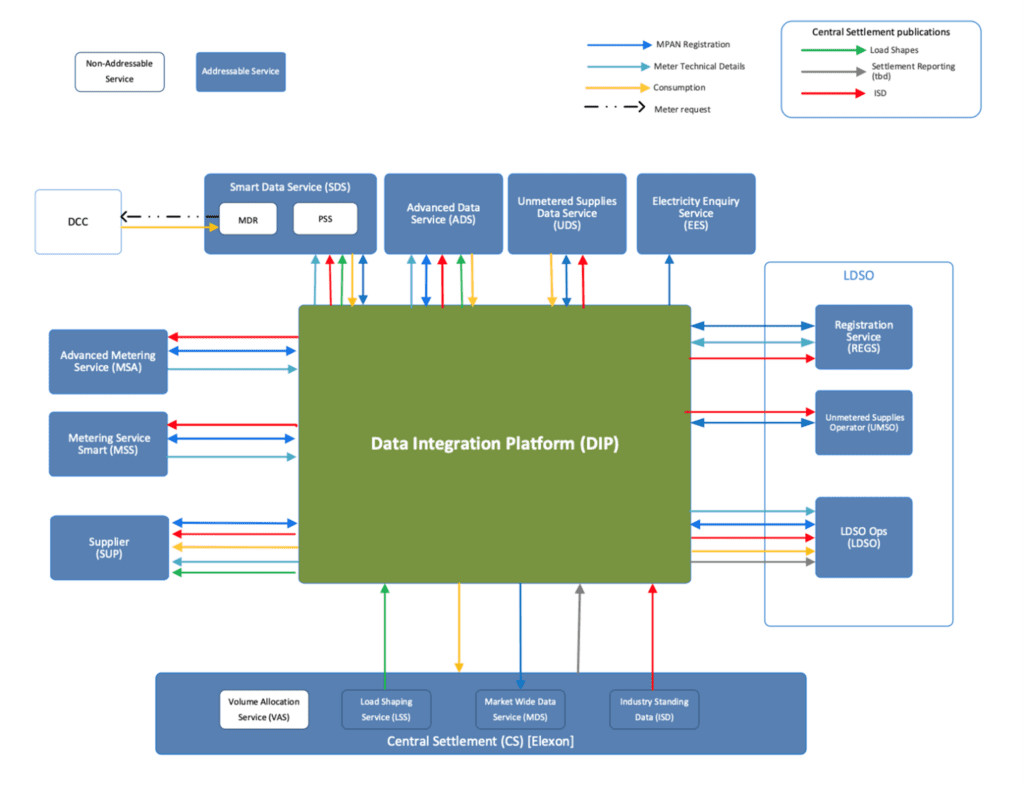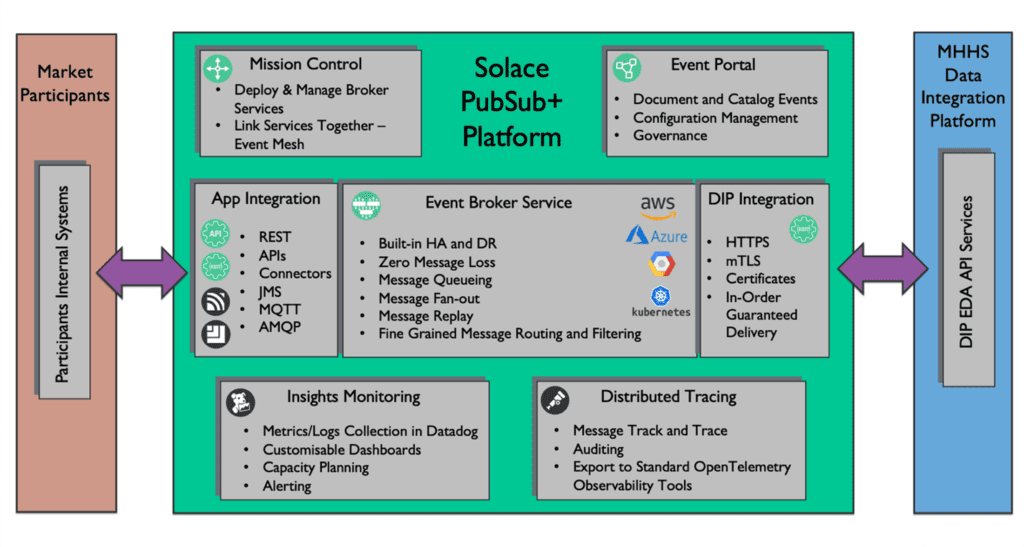With today’s ever-increasing demands on the energy industry, the need to make time-critical information and systems more event-driven has never been more relevant, and Solace specializes in helping companies do exactly that. That’s just one example – you can learn more about how the energy industry is becoming event-driven here.
About Market-wide Half-Hourly Settlement (MHHS)
MHHS is a UK government-backed initiative to maximize the opportunities provided by smart metering by developing a process that delivers benefits for consumers and enables a smart, flexible energy system for producers.
The deadline was originally October 2025, but Ofgen extended it to December 2026 because many companies are not yet able to implement it. There are very few participants who are actively engaged in the process and testing their solutions, and many are still in the early days of understanding the impact these requirements have across their businesses.
The MHHS Programme is intended to create a faster and more accurate settlement process for all market participants, enabling a transformational change across the electricity industry to support the growth of renewable power in the UK.
The architecture will define a set of services required to deliver settlement period (SP) data from a meter to the central settlement body to enable the calculation of the amount of energy that the electricity supplier’s customers have consumed (or exported) in each settlement period for each settlement day (SD). This calculation is then used in the imbalance settlement process, which compares the supplier’s contracted purchases of energy to the amounts deemed to have been consumed (sales) by each of the supplier’s customers (and recognizes any amounts of energy contracted by national grid under the balancing mechanism). Settlement data is also provided for network charging.
In addition to these core services, several supporting services need to be established to ensure the smooth running of the electricity market with the move to market-wide half-hour settlement.
MHHS Technical Proposition
The MHHS Data Integration Platform (DIP) is the event-driven/message orientated middleware component required to support the flow of events/messages between industry participants for MMHS.
The DIP will broker new message flows between market participants supporting the business process underpinning the MHHS. i.e. there are no direct point-point interfaces.
The DIP will be responsible for ensuring all messages are valid and correct before securely routing the messages from participants and the Central Settlement Service (Elexon) and the other MHHS services.
All market participants are required to integrate their internal systems to the DIP in order to participate in the MHHS programme.
New Integration Requirements MHHS Introduces
For businesses that are market participants, internal systems performing settlement related functions need to exchange data with the DIP common interface. For many organisations this will be the first exposure to an event-driven (or message-oriented) form of integration.
The DIP will be hosted on Microsoft’s Azure public cloud and will expose multiple message/event channels. Each message channel represents the logical and physical exchange of messages for a set of related MHHS Services.
Each DIP message/event channel will be bidirectional and accessed via API HTTP(s) endpoints using a standard RESTful architecture for both the inbound Interface and the outgoing publication. Each message/event channel will be defined by a specific interface definition, including the message/event code and data payload specification for the Send Message API for incoming messages and a ‘receive messages’ webhook for outgoing messages.
Connections between market participants and the DIP will be across the public internet and will be subject to cryptographic protection that ensures the authenticity, integrity, and confidentiality of the connection. Hence, all communications with the DIP shall be via a secure communications channel consisting of an encrypted and authenticated HTTP TLS session.
The TLS session must be configured for (mTLS), such that each entity authenticates the other during the handshake protocol. The mTLS certificates will be issued by the DIP Certificate Authority (DCA).
Solace Platform Meets all the Demands of MHHS
Solace Platform is a complete event streaming and management platform for the real-time enterprise. It helps enterprises design, deploy, and manage event-driven systems that span hybrid cloud, multi-cloud, and IoT environments, so enterprises can be more integrated and event-driven. It gives you everything you need to embrace the power of event driven architecture (EDA), and enables energy market participants to interface the MHHS DIP system.
Advantages and Benefits
- Act as a single gateway to reliability and securely exchange messages between their internal systems and the MHHS DIP.
- Highly robust platform with built-in high availability within region and optional disaster recovery across regions, ensuring continuity of service and no message loss.
- Allows participants’ internal systems and applications that require integration with MHHS Services to be decoupled without the need to connect directly to the DIP.
- Meets all the security and technical requirements to connect to the MHHS DIP, and has been successfully tested against the MHHS Programme’s DIP simulator.
- Support for standard OpenTelemetry based distributed tracing to keep an external audit log of message interactions with the DIP.
Key Components and Capabilities
- Solace Event Broker enables the transmission of events between different components of a system, acting as a mediator between publishers and subscribers. It establishes loosely coupled relationships between applications using message exchange patterns like publish/subscribe and request/reply, or combine multiple patterns, depending on the specific requirements of the interaction.
- A rich set of messaging APIs/and support for open protocols provides great flexibility for applications to easily send and receive messages, including programming APIs for C, .NET, iOS, Java, JavaScript, JMS, Node.js and Python, and support for popular open protocols like AMQP, MQTT, REST and WebSocket.
- Rich deployment options, including public cloud providers such as Amazon Web Services (AWS), Google Cloud Platform (GCP), and Azure, customer owned cloud regions and on-premises datacenters.
- You can build an event mesh made up of interconnected event brokers to dynamically route messages to/from systems and applications regardless of where they are located, enabling event driven integration for new internal and external use cases other than MHHS.
- Solace Event Portal: An advanced management tool for designing, documenting and governing all your Event Driven integration flows.
See here to read how the UK’s renewable energy company Drax Group is using the Solace Platform to meet their MHHS requirements, as well as event-enabling their business to support other use cases such their industry-leading electric vehicle (EV) solution.
If you would like to find out more about how Solace Platform can help you event-enable your business and meet your MHHS requirements, please get in touch.
Explore other posts from category: For Architects

 Richard Lawrence
Richard Lawrence


